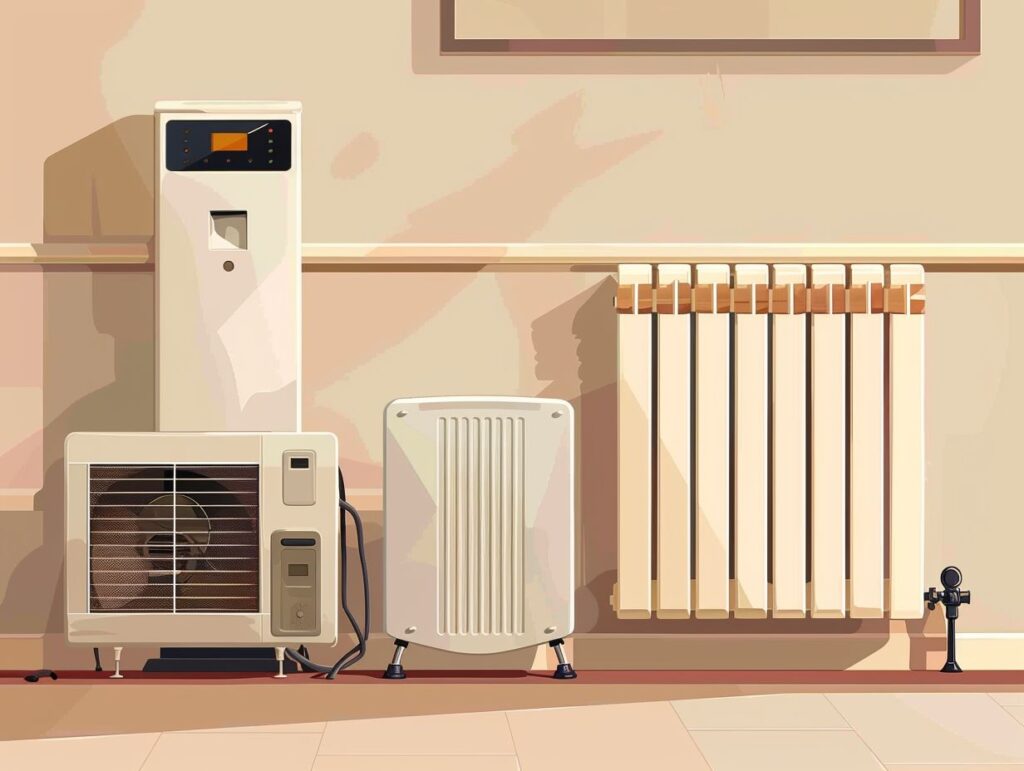Are you looking for the best heating solution for your home? In this comparison, we assess the pros and cons of electric heating versus floor-standing heating (radiators), taking into account factors such as efficiency, cost, maintenance, heat distribution, and installation considerations.
By offering a detailed analysis and long-term maintenance recommendations, our aim is to help you make an informed decision about the most appropriate heating system for your home. Expect valuable insights on how to maintain the efficiency of your heating system!
Key Takeaways:
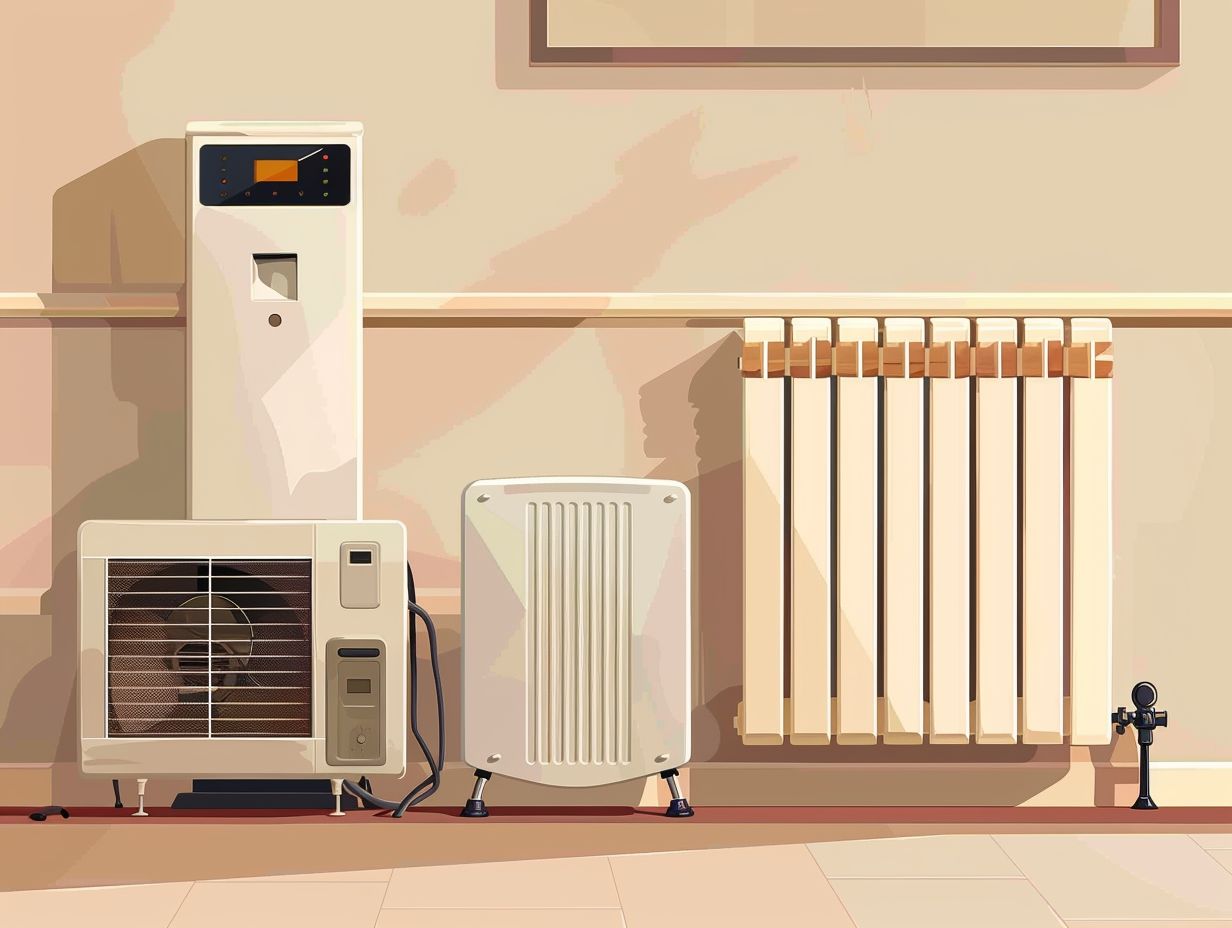
- Electric heating is more energy-efficient and cost-effective than floorstanding heating, but it may require more maintenance.
- Floorstanding heating offers better heat distribution and easy installation, but it can be more expensive to operate in the long run.
- Consider factors such as energy efficiency, installation costs, and long-term maintenance when deciding between electric and floorstanding heating for your home.
Overview of Electric and Floorstanding Heating
Electric and freestanding heating systems offer efficient solutions to keep your rooms warm and comfortable. Electric radiators and underfloor heating are popular choices for modern homes in the UK, providing cost-effective heating options.
These systems not only provide energy-efficient heating but also play a significant role in enhancing room comfort levels.
Electric radiators allow for precise temperature control in individual rooms, enabling personalised comfort settings. On the other hand, freestanding heating systems offer the benefit of uniform heat distribution throughout the entire room, eliminating any cold spots.
In terms of maintenance, both types require minimal upkeep compared to traditional heating systems, resulting in reduced overall ownership costs.
Pros and Cons of Electric Heating
Electric heating systems, such as electric radiators and underfloor heating, provide efficient room heating without the necessity of a central heating system. These systems depend on electric models like the Livingstone range to deliver warmth through radiant heat, making them a preferred option in the UK.
Efficiency, Cost and Maintenance Considerations
When you are considering electric heating options, efficiency, costs, and maintenance are pivotal factors that should guide your decision-making process.
Both electric radiators and underfloor heating systems present energy-efficient solutions; however, they may differ in terms of initial installation expenses and long-term maintenance needs.
One critical element that influences the effectiveness of electric heating systems is how heat is distributed. Electric radiators sometimes result in uneven heating within a room, whereas underfloor heating provides a more consistent level of warmth. This not only impacts comfort levels but also affects overall energy consumption.
Enhancing air quality stands out as another essential consideration. Proper ventilation and air filtration systems can help you uphold a healthy indoor atmosphere and contribute to the efficiency of your heating system.
It is imperative to assess these aspects alongside the installation costs and ongoing energy expenditures. Although underfloor heating may necessitate a higher upfront investment, it typically proves to be more energy-efficient in the long term, leading to potential savings over time.
Regular maintenance inspections and servicing are crucial in ensuring optimal performance and longevity of the system, ultimately enhancing its efficiency.
Pros and Cons of Floorstanding Heating
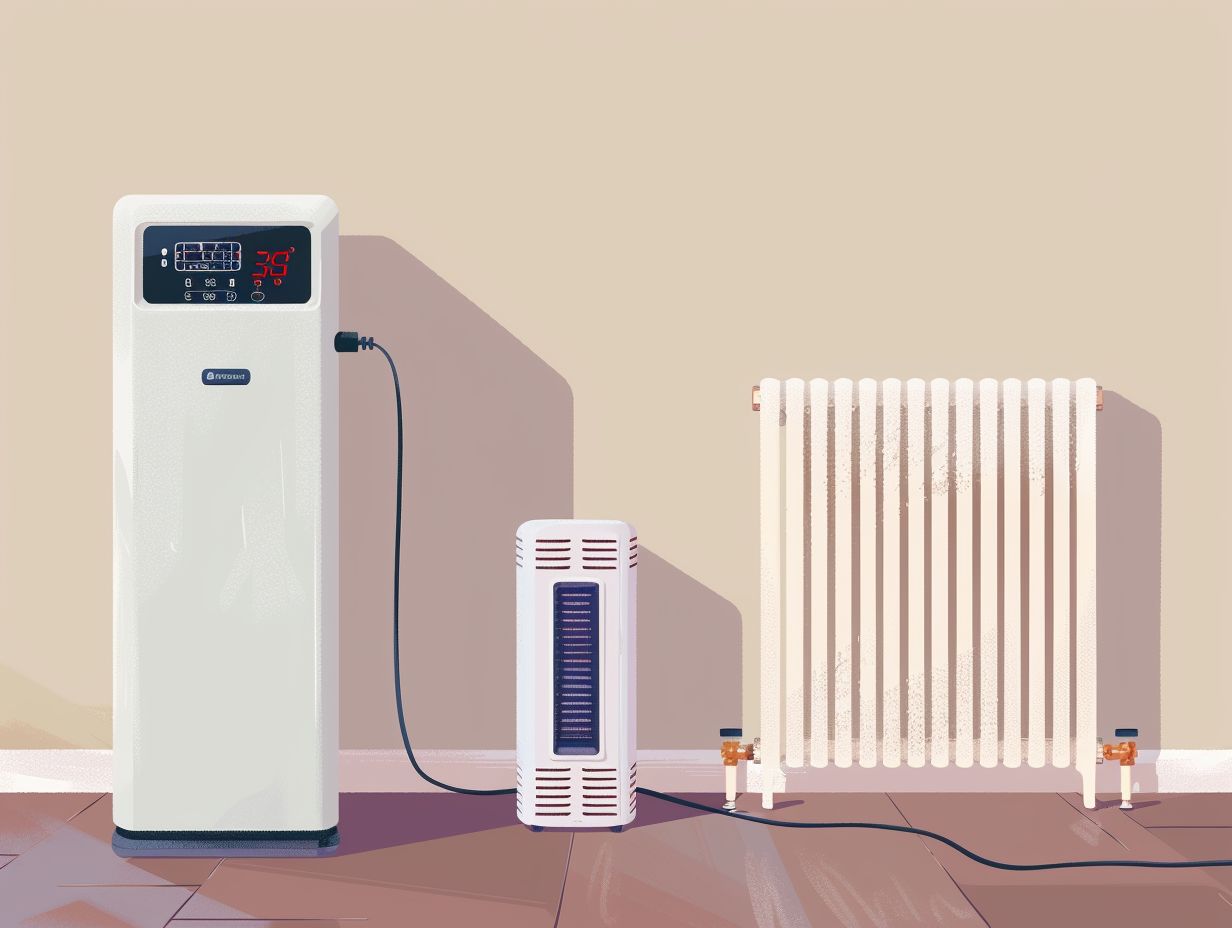
Freestanding heating systems offer an alternative to wall-mounted electric radiators or underfloor heating for homeowners seeking flexibility in room layout and furniture placement. However, it’s important to note that freestanding heaters may have limitations in heat distribution and energy efficiency when compared to other heating options.
Heat Distribution and Installation Factors
In any heating system, whether it’s electric radiators, underfloor heating, or freestanding heaters, effective heat distribution and proper installation are critical considerations. Achieving optimal heat distribution is essential for eliminating cold spots and enhancing overall comfort.
Even heat distribution in a room not only maintains consistent temperatures but also improves air quality by preventing the growth of mould and mildew in areas with stagnant airflow.
Installation elements like vent placement, insulation quality, and the size of the heating unit all contribute to how efficiently heat is dispersed. Properly designed ductwork and regular maintenance are key factors in preventing inefficiencies that could result in temperature fluctuations and discomfort for occupants.
Choosing the Right Heating Option for Your Home
When deciding on the appropriate heating solution for your home, it is important to evaluate factors such as room layout, available wall space, furniture placement, and desired comfort level.
Whether you choose electric radiators, underfloor heating, or a central heating system, it is essential to take into account the technology, control features, and energy efficiency of each system.
Factors to Consider and How to Decide?
When making an informed decision about your heating system, it is essential to consider various factors such as energy efficiency, installation requirements, maintenance costs, and room layout. To ensure a comfortable and cost-effective solution, evaluate the available options based on your preferences and heating priorities.
Assessing the room layout is crucial for determining the type of heating system that will best suit your needs. Factors such as the size of the space, ceiling height, insulation, and number of windows all play a significant role in determining the heating capacity required.
It is also important to consider the heating technology options available, which range from traditional furnaces to modern heat pumps and radiant heating systems. Additionally, control features like programmable thermostats or smart home integration can enhance the efficiency and convenience of your heating system.
Comparing Costs and Energy Efficiency
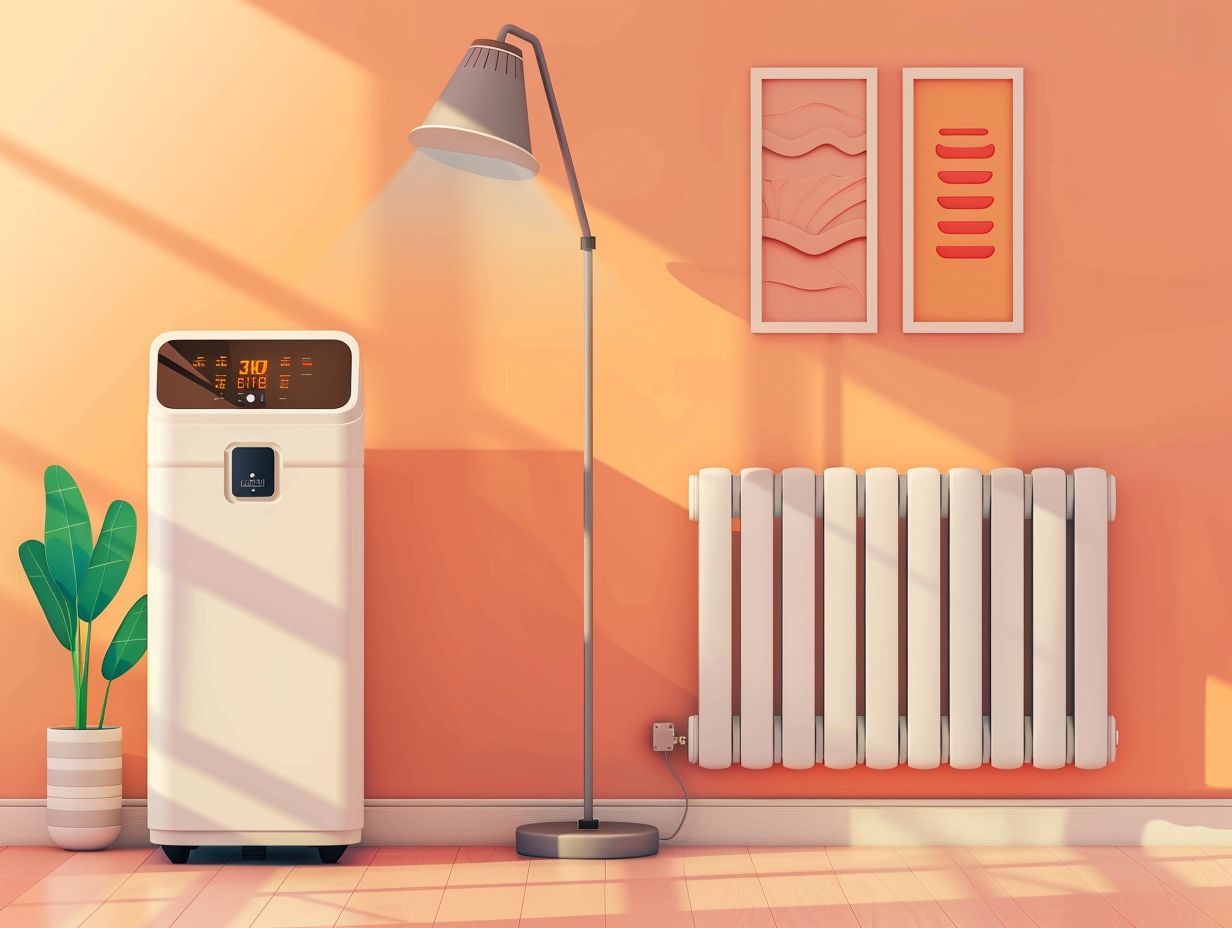
When comparing heating costs and energy efficiency, you need to consider the initial installation expenses, ongoing maintenance costs, and long-term energy bills associated with different heating options.
Analysing the overall costs and efficiency of electric radiators, underfloor heating, and central heating systems can assist you in making an informed decision for your home.
Breaking Down the Numbers
To understand the costs and energy efficiency of different heating systems, you need to analyse the numbers associated with installation, maintenance, and monthly energy bills. By examining the financial aspects of electric radiators, underfloor heating, and other options, you can make an informed decision based on your budget and heating requirements.
Electric radiators are known for their relatively simple installation process and often come with lower initial costs compared to underfloor heating. However, it’s important to note that their monthly energy bills may be higher, especially in colder regions.
On the other hand, underfloor heating offers a luxurious heating experience with consistent heat distribution but typically requires a larger upfront investment.
Central heating systems strike a balance between efficiency and affordability in the long term. However, it’s crucial to consider that installation costs can vary based on the project scope and the chosen system.
Maintenance and Long-Term Considerations
Consistent maintenance is crucial for ensuring the smooth and efficient operation of your heating system. It is advisable to take into account long-term considerations such as maintenance expenses, energy efficiency, and the durability of electric radiators, underfloor heating, or any other heating solutions to guarantee optimal performance over an extended period.
Tips for Keeping Your Heating System Running Smoothly
To ensure your heating system operates efficiently, you should follow these tips:
- Schedule regular maintenance checks
- Adjust temperature settings for optimal comfort and energy savings
- Invest in quality installation to prevent issues
By implementing these strategies, you can keep your electric radiators, underfloor heating, or central heating system in top condition.
Regular maintenance checks are vital in ensuring that your heating system functions optimally. By having a professional inspect and tune up your system regularly, you can address any potential issues before they escalate.
In addition, adjusting the temperature settings to strike a balance between comfort and energy savings can significantly impact your overall heating efficiency. Setting a programmable thermostat can help in automating this process, ensuring that your home stays at the desired temperature levels without unnecessary energy consumption.
Regarding installations, it is advisable to opt for reputable professionals with experience in your specific heating solution. This ensures proper setup and longevity of your system.
Frequently Asked Questions
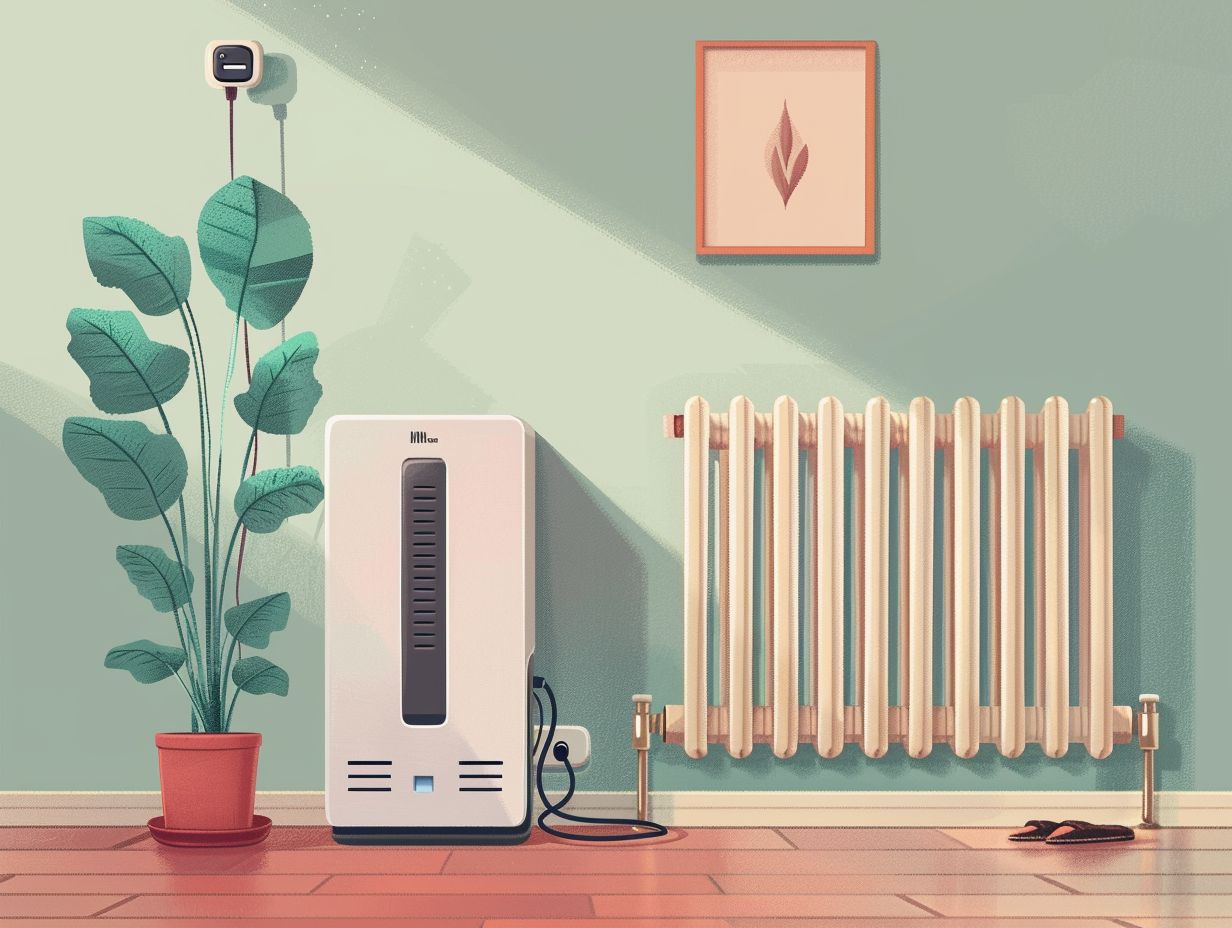
What is the difference between electric heating and floorstanding heating (radiators)?
Electric heating refers to a system where electricity is used to directly heat the room, while floorstanding heating uses a central boiler or furnace to distribute hot water or steam to radiators throughout the room.
Which is more energy efficient, electric heating or floorstanding heating?
In general, floorstanding heating tends to be more energy efficient, as it uses a central heating source to distribute heat evenly throughout the room. Electric heating can be more expensive to run, especially in larger spaces.
Are there any safety concerns with electric heating vs floorstanding heating (radiators)?
Both electric heating and floorstanding heating (radiators) can be safe options, as long as they are installed and maintained properly. However, electric heating may be more prone to electrical hazards or fire risks if not used correctly.
Which type of heating is easier to install?
Electric heating is generally easier to install, as it does not require the installation of a central boiler or furnace. Floorstanding heating (radiators) may require more complex installation, as well as the need for pipes and ductwork.
Is one type of heating more expensive to purchase?
The initial cost of purchasing and installing electric heating is typically lower than that of floorstanding heating (radiators). However, the long-term costs of running electric heating may be higher, due to the cost of electricity.
Can both types of heating be used in all types of buildings?
Both electric heating and floorstanding heating (radiators) can be used in most buildings. However, electric heating may be more suitable for smaller spaces or areas without access to a gas or oil supply, while floorstanding heating may be better for larger buildings or homes with a central heating system already in place.

